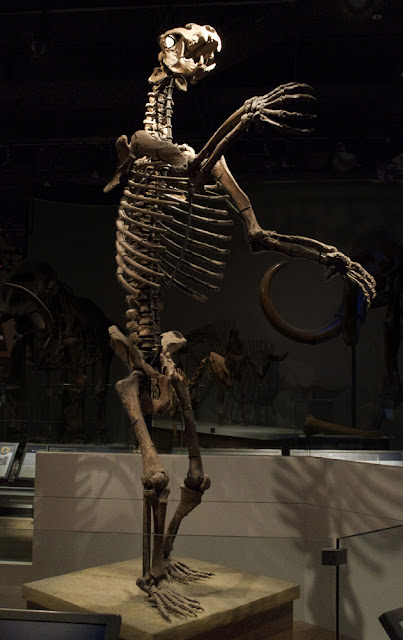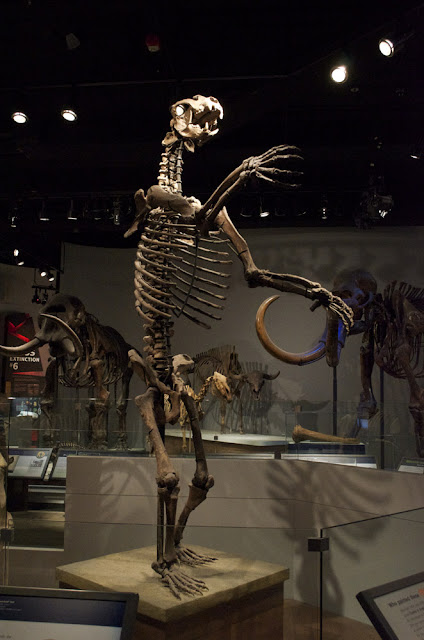 |
| Nikon D7000, 22mm (18-55mm), f7.1, 1/40, ISO 6400, cropped & retouched |
This is the skeleton of a Short Faced Bear from the Field Museum in Chicago. These guys were serious business. For scale, imagine a person coming up to somewhere around the bottom of the bear’s rib cage.
Paleontologists believe these bears prevented human migration into the
Americas for thousands of years. I suspect they did this by simply
eating anyone stupid enough to try it. Still, it conjures images of the
bears patrolling a checkpoint on the Bering land bridge.
“Oh no,” the bear says, making a twisting gesture with one giant claw.
“Turn it around and march it right back where you came from. One look at
y’all and we just know what you’ll get up to if we let you in here.”
Okay, down to photo business. As usual, I shot several pictures of this subject. This one turned out to be my favorite because by coincidence I happened to catch one of the ceiling lights right in the bear’s eye socket, giving it a devil skeleton bear look. And this was the 1666th picture I took with my D7000. Spooky.
On the other hand, the original shot required some editing. Here’s what it looked like straight out of the camera:
 |
| Nikon D7000, 22mm (18-55mm), f7.1, 1/40, ISO 6400 |
For starters, it needed a little cropping to emphasize the subject and improve the shot composition. But the real problem here is the distracting background stuff. For starters, the white dots of the ceiling lights floating in the black field are distracting. And worse, the bones behind the bear are creating a lot of visual “noise” that makes it harder to see the foreground subject, especially around waist level.
So off we go to Photoshop for some retouching. First I cropped the picture. Then I used the clone stamp tool to eliminate the floating lights. The tricky part was fixing the background. I didn’t want it to disappear entirely, but I didn’t want it messing with my bear. So I carefully masked the image, which looks like this on the screen:
With just the background selected, I darkened it up quite a bit. In the final version you can still get a sense of the space, but the rest of the skeletons are too dim to steal attention from the foreground subject.
Oh, and for what it’s worth: editing like this is fine if all you’re after is a better picture. But for a photojournalist, making these kinds of adjustments can create serious ethical problems. Folks who work for newspapers and news magazines are supposed to be capturing what they see and not eliminating elements just to make the picture look better. Some photojournalists have even been fired for removing elements or moving things around in their photos.












